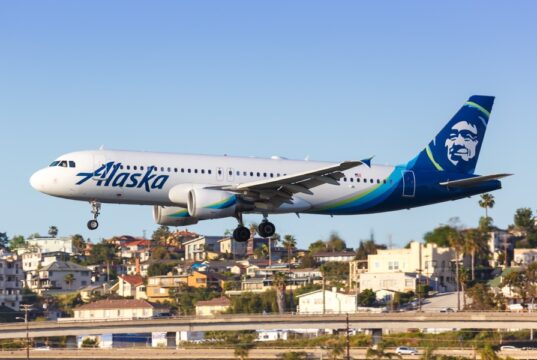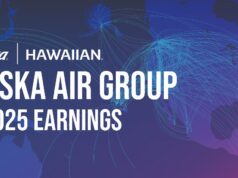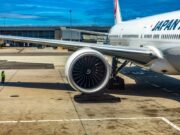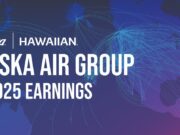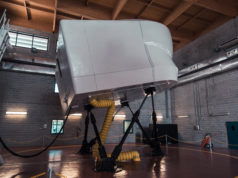 You’ve probably heard the saying, “If what you’re doing isn’t working, try something different.” If you’re one of those pilots who has many thousands of flight hours but you’ve had your applications published for many months and still no interview invitations, it might be time to try something different. You’ve been told to make frequent updates to your applications, but if the only section you find yourself updating is the Flight Times section, maybe you’re repeatedly running full-speed at the same brick wall and expecting a different outcome. How’s that working for you?
You’ve probably heard the saying, “If what you’re doing isn’t working, try something different.” If you’re one of those pilots who has many thousands of flight hours but you’ve had your applications published for many months and still no interview invitations, it might be time to try something different. You’ve been told to make frequent updates to your applications, but if the only section you find yourself updating is the Flight Times section, maybe you’re repeatedly running full-speed at the same brick wall and expecting a different outcome. How’s that working for you?
It’s natural to want to compare yourself to other pilots who are getting interview calls to determine where you’re going wrong. However, unless you have that pilot’s application and résumé in front of you, you’re not really making a true comparison. I often see pilots on social media forums asking other pilots who received an interview invitation for their flight time credentials or trip report. Comparisons of trip reports don’t tell the entire story. A typical trip report lists the pilot’s flight experience and hours, but no other background information that could be used as a basis for comparison. It’s frustrating to read a trip report from someone with far less flight time and wonder why they got a call and you didn’t. What the trip report doesn’t tell you, for example, is that this pilot has a master’s degree, attained Eagle Scout status, upgraded to Instructor Pilot (IP) in his first operational military assignment, and led a church mission to Honduras to help build schools for local children.
So, maybe you haven’t done all those wonderful things, but there is still plenty you can do to enhance your résumé and application profile. One of the factors that airlines weigh heavily when screening pilot candidates is their leadership experience. Despite all the talk of a pilot shortage, it’s still a highly competitive environment among the major airlines. Building quality flight time is important, but flying hours are just part of the equation. Leadership experience can be an equally, and possibly even more important part of the picture if you already have the minimum flight time qualifications.
You’re particularly fortunate if you’re reading this with several years remaining before you’ll be ready to submit your airline applications because you have plenty of time to enhance your leadership profile. But, even if you’re one of those pilots whose applications have already been submitted for several months or years, it’s never too late to add to your leadership credentials. Of course, there are many other ways to add points to your application score, but within the past year, leadership experience and education have been highly emphasized by the major airline’s hiring departments. Therefore, this article will focus on the leadership component of your profile. Later articles will cover other areas where you can add points to your application profile in areas that are important to the major airline’s hiring departments.
Why Airlines Hire for Leadership
Put yourself in the shoes of the airline’s hiring department. Do you think they are hiring you to just sit in the right seat your whole career, slinging gear and getting fat on first-class crew meals? Of course not! They are hiring future captains. They need leaders who can see the big picture, resolve conflicts, go above and beyond for their organization, and have demonstrated ability to keep a flying operation running safely and smoothly.
Unlike many days in the military when we would have weather cancel flying and we’d opt for a good lunch push instead, in Part 121 flying you will be pressured to takeoff as long as you have a legal alternate. Good captains, and good first officers (FOs) who think like captains, will ask the question, “Yes it’s legal, but is it smart?” He/ she may get on the phone with dispatch or a chief pilot and either come to a mutual decision to delay the flight, or perhaps add additional fuel and a second alternate for an additional safety margin. Despite the pressures to takeoff and make money for the company, the airline ultimately desires that kind of safety-first leadership on the flight deck.
Another reason the airlines hire for leadership is to keep their flying operation running smoothly. When you start flying in the Part 121 world, you will be amazed at the issues that come up in the back end of the airplane. We had to cancel a takeoff clearance at LAX last week because a dog got loose and was running around the cabin. It happens. Captains deal with issues well beyond the skills of just flying a jet aircraft in daily operations, including passenger issues ranging from medical emergencies to drunk and disorderly conduct. Sometimes your own crewmembers can’t get along and it falls to the captain’s leadership skills to resolve the conflict.
Airline hiring departments know that a good leader will use all the resources available to resolve a problem. Think about the United Airlines flight 232 accident in 1989. Despite multiple redundant systems, a DC-10 lost all hydraulic systems (a scenario for which there was no emergency procedure since it wasn’t thought possible). Captain Al Haynes knew he was in deep trouble but he also knew he had an experienced check airman riding in the back whom he called upon to help handle the emergency on the flight deck. As a crew, they determined they could partially steer the aircraft using asymmetric thrust from the engines. Miraculously, they were able to maneuver the jet to a crash landing at Sioux City Gateway Airport in Iowa. Despite heavy loss of life, Captain Haynes’ leadership and technical skills were credited with saving the lives of the surviving 185 passengers and crew. For all these reasons, the airlines screen pilot applications with an eye toward demonstrated leadership.
 Demonstrate Leadership through Career Progression
Demonstrate Leadership through Career Progression
The airlines have a long history of poaching aviators from the military (much to the chagrin of current DoD leadership) because they know, for the most part, they are getting a highly trained pilot with lots of complex turbine time in challenging flight conditions. They have screened literally hundreds of thousands of pilot applications and résumés over the decades, so they aren’t foreign to what a natural military career progression looks like.
In order to maximize your chances of getting an interview, you want your career to show a steady upward vector when viewed on paper. In the air, that means upgrading to the next qualification at the average pace of your peers, or earlier if able. When the hiring department scans your résumé, they should see aircraft qualifications that follow the natural career progression for your flying community (cargo, fighter, bomber, tanker, ISR, etc.) on a pace that either meets or exceeds the norm. If most pilots in your community upgrade to Aircraft Commander (AC) in their first assignment, then that should be your goal too. If you can go one step further and upgrade to Instructor Pilot (IP) in the same assignment, that will definitely catch the eye of the airline-hiring department. This demonstrates a principal I call second order leadership. Although aircraft qualification upgrades are more of a technical skill than leadership training, it also demonstrates a quality common to most leaders – the desire for above average achievement!
This doesn’t mean that if you (like myself) are a late bloomer, in terms of aircraft upgrades, the airlines won’t hire you. It just means that you will either have to kick it into high gear later in your career, or make up for it in other areas of your overall application score. I didn’t upgrade to IP in the F-16 until I was a major on my fourth operational assignment! However, I was rewarded for busting my rear end in that assignment with an upgrade to Evaluator Pilot (EP) and a follow-on assignment as a Higher Headquarters F-16 Standardization and Evaluation (Stan/Eval) pilot. Hard work does pay off.
You should also show a natural career progression in terms of your duty titles and leadership jobs held in the military. In the Air Force that would typically start with chief of a shop (scheduling, training, stan/eval, etc.), followed by flight commander, Assistant Director of Operations (XO for you USN, USMC, USCG types), Squadron Commander, and other leadership positions up the chain-of-command. Again, the airlines have screened thousands of military pilot applications so they know what to look for. If you strive to continually trend your military career vector as an arrow pointing up and to the right, it will greatly assist your career transition to the airlines.
It’s Never Too Late
Many of you are probably reading this right now and saying to yourself, “That’s great Marc, but we can’t all be the shiny penny. What if I haven’t been able to achieve all those qualifications and titles?” Well, it’s like the guy who hits age 55 and realizes he forgot to invest for his retirement. He probably won’t be as well off as those who started investing at age 28, but if he starts investing now he’ll still be better off at age 70 than if he gives up and never invests at all. It’s time to start playing catch-up!
Here are a few things you can do to add to your leadership profile while you’re still on active duty or serving in the guard/reserve. In addition to aircraft qualification upgrades, there are some key duty titles that look sexy to an airline-hiring department and provide ample opportunity to demonstrate leadership ability.
It should come as no surprise to you that safety is an overriding priority in the airline industry. If you have formal military safety training, you just became more attractive to the airlines. However, as a member of the Cockpit to Cockpit community, you know that’s it’s not good enough to just be safety trained. You need to go the extra mile and demonstrate safety leadership. Getting some safety stink on you early in your career will align you nicely for safety leadership positions such as Chief of Safety at the squadron/wing level, or even higher echelons later in your career.
However, you don’t need to have the full blown six- to eight-week flight-safety training to demonstrate safety leadership. As a newly pinned-on Lieutenant Colonel, I “volunteered” (i.e. I drew the short straw) to attend the one-day Aircraft Investigation Board President Course. Shortly thereafter, I was provided the opportunity to serve as the board president on a very unique safety investigation in the T-6A community that resulted in a DoD fleet-wide inspection. Our investigation team’s recommendations were implemented across the fleet and we were credited with potentially preventing future loss of aircraft and lives. The takeaway here is that one-day of training provided me a great leadership opportunity and it’s something for which you can easily volunteer. You can bet that bullet was included on my airline application and it made for a great interview “tell me about a time” story.
There are some other aviation leadership positions that are very common and easy to obtain. In the Air Force, many pilots get roped into becoming a Supervisor of Flying (SOF). I’m sure each service has an equivalent position. The SOF, although not a qualified air traffic controller, works in the air traffic control tower. The SOF acts as a direct representative of the operations group commander (who is ultimately responsible for executing the flying mission on a base – usually an O-6 type). As such, the SOF is responsible for ensuring safe, efficient flying operations, including weather recalls, in-flight and ground emergencies, schedule conflicts, airfield status, and so on. The SOF has to be prepared to deal with any contingencies that may arise relating to the flying operation. You can see why having a SOF qualification (or service equivalent) might look good to an airline looking to hire pilots who can handle stress, and if you do the job long enough, you’re almost guaranteed to have a situation arise that will require you to demonstrate leadership. Additionally, you could strive to become the SOF program manager – another great leadership opportunity to help build your leadership profile.
At undergraduate pilot training (UPT) bases, there is another aviation leadership position similar to SOF called Runway Supervisor Unit (RSU) controller (Runway Duty Officer for USN/USMC/USCG). The RSU literally controls the traffic pattern for UPT bases. The controller leads an RSU team consisting of another IP and two student pilots. Much like the SOF position, the RSU controller is delegated a large amount of trust and responsibility and therefore leadership is an inherent requirement to hold the position. When you control a traffic pattern filled with inexperienced student pilots, many who are flying solo, general buffoonery is commonplace. Therefore, your leadership as a controller will be tested to the max! Other leadership opportunities include upgrading to RSU controller instructor and RSU program manager.
As a community, we tend to scoff at the numerous additional duties lumped on us as military pilots. The next time you’re cleaning out your email inbox at work, don’t auto-delete all those “We need a project officer for ______” emails. Some of those additional duties can provide an easy leadership opportunity for you. As a young captain, I had a wing commander who was fired up about getting pilots to support the officer’s club. I saw an email asking for a project officer to run a membership drive, so I volunteered. With a little support from top base leaders and O’club management, we organized a couple of great O’club parties after flying ended on Friday afternoons, and before I knew it, club membership was up forty percent.
Later in my career, another fun leadership position involved organizing the biannual base airshow. Although it was a ton of work, that one was also a lot of fun and provided me the opportunity to shine (or fall flat on my face). Luckily, in this case, I shined in a high visibility position.
Being a SOF, an RSU controller, or the project officer for a high visibility project on base probably won’t, in and of itself, be the magic bullet that gets you noticed by the airlines, but it does get you noticed by your commanders. Once you gain the spotlight of senior leaders in your unit, it can quickly open doors to other jobs and duty titles of more importance. Some people call this the “Halo Effect,” but I think that term has a negative connotation usually associated with someone who gets undeserved credit for being better than they really are. Therefore, I call it the “Leadership Snowball Effect” – success in smaller leadership roles tends to open doors to more important leadership positions in the future. This is how you build a leadership profile that will stand out on airline résumés and applications.
Building a Leadership Profile Outside the Military
I’m aware of the fact that Cockpit to Cockpit and associated articles tend to focus on those of you making the airline transition while still serving in uniform, but I also want to provide some wisdom for those of you who come from a civilian aviation background or are no longer serving in uniform. There are also plenty of ways to enhance your leadership profile outside the military.
Here’s a way to kill two birds with one stone – assume a leadership role in a volunteer organization. We’ve established that the airlines want to hire leaders, and they also love individuals who demonstrate servant leadership by volunteering their time and talent for charitable causes. Many of you probably already perform volunteer service in your community, so why not take it to the next level by taking on a leadership role in that organization?
If you’re passionate about aerospace education, there are numerous leadership positions available through Civil Air Patrol, Young Eagles, Order of Daedalians, or Women in Aviation International. If you have any carpentry skills (or even if you don’t), Habitat for Humanity is always looking for leaders to organize and lead home building projects for the disadvantaged. I used the example (based on a real pilot I know) at the beginning of this article of the pilot who led a church mission to Honduras to help build schools for local children. Whatever cause you’re passionate about, there is opportunity to step up and lead in that endeavor.
If you have a civilian flying job, there are several ways to show that you are willing to roll up your sleeves and do the hard work required to be a leader in your company. Taking on the added responsibility of simulator or ground school academic instructor is a great place to start. Much like the “leadership snowball effect” mentioned earlier with respect to military pilots, outstanding performance as a simulator or ground school IP can open doors to sexier titles that are sure to catch the attention of the major airlines such as Check Airmen or Chief Pilot.
You can also show initiative by creating your own leadership opportunities. One of my best friends created an annual scholarship for aviation students at his alma mater. I saw another great example of self-initiated leadership after Hurricane Harvey struck Houston and surrounding areas in August of last year. A member of our local flying club organized relief supply donations and an air armada of general aviation aircraft and pilots from the Dallas area to ferry supplies to those affected by the storm.
Summary
It’s true – airlines care about their bottom lines. They want to hire pilots who will contribute to the bottom line by being leaders on the flight deck and within the company as a whole. Leadership demonstrates an ability to keep the operation running smoothly and is a quality of someone who will be a productive member of the organization. A great leader isn’t satisfied with just doing the minimum and you shouldn’t be either.
Once you accumulate competitive flight experience, it’s time to start working on other areas of your airline application. Remember, if what you’re doing isn’t working, try something else. Enhancing your leadership profile can be every bit as important as your flight times once you meet the minimums. It’s not as difficult as you may think and it’s never too late. Start with small leadership titles, projects, and roles then use the momentum created to leverage the leadership snowball effect. Before you know it, you will be appointed to leadership positions and titles that will really catch the attention of the pilot hiring managers at the major airlines.
Nobody said being a leader is easy…hard work begets more hard work, but that’s exactly who the airlines want to hire. They want the pilot who has demonstrated that he/she is not afraid of hard work and will step up to the plate as a leader when the time comes. ACN






































































